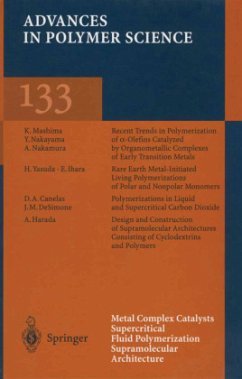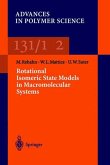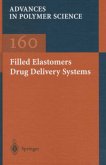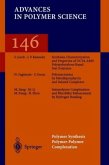Thepolymerizationofole nsanddi-ole nsisoneofthemostimportanttargets inpolymerscience.Thisreviewarticledescribesrecentprogressinthis eldand deals with organo-transition metal complexes as polymerization catalysts. - cent developments in organometallic chemistry have prompted us to nd a precise description of the mechanism of propagation, chain transfer, and terminationstepsinthehomogeneouslymetal-assistedpolymerizationofole ns anddiole ns.Thus,thisdevelopmentprovidesanideafordesigninganycatalyst systems that are of interest in industry. Recently,the agostic interactionofalkylgroup(s)ontransitionmetalshas emerged as highly basic and new concept and is found to be important in understandingthemechanismofthemetal-catalyzedhomogeneousoligomer- ation and polymerization of a-ole ns. Early transition metal alkyl complexes generallyhavepartiallyionicM C bondsandshowa-agostichydrogeninter- tion that somewhat stabilizes the catalytically active species by providing el- tronsatavacantsite onthe metal.Thisisinsharp contrasttothefactthatlate transition metal alkyl complexes show mainly b-agostic hydrogen interaction that causes the hydrogen transfer easily through b-hydrogen elimination and reductive elimination, and that gives rise to the oligomerization of ole ns. Organometalliccomplexesoftheearlyandlatetransitionmetalshavebeenused as catalysts for ole n oligomerization and polymerization. The mechanism involved in these catalyst systems depends very much upon the kind of metal centersaswellastheirco-ligands,andthusthedi?erentmechanismswhichcan bedistinguishedbydetailedinvestigationsshouldbeassumedforearlyandlate transition metal catalysts. In this contribution, we review the mechanism of polymerization and oligomerization involving early transition metals, taking as our basis recent resultsinadvancedorganometallicchemistry.Firstofall,somerecentexamples of the previous reviews concerning the Ziegler-Natta polymerization are cited [1 10]. Then, relevant new reports are surveyed in a systematic fashion.
Bitte wählen Sie Ihr Anliegen aus.
Rechnungen
Retourenschein anfordern
Bestellstatus
Storno









